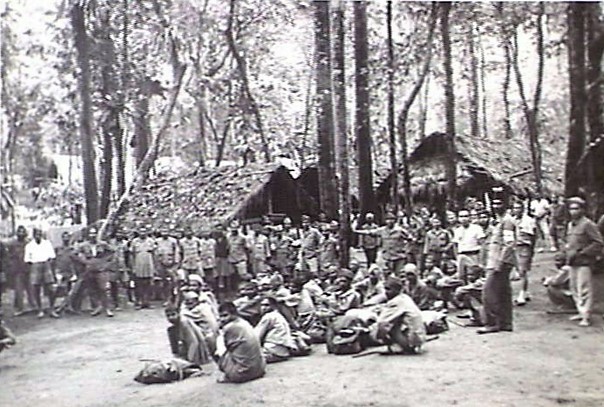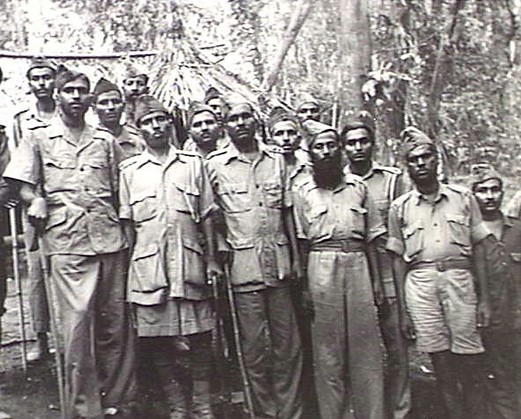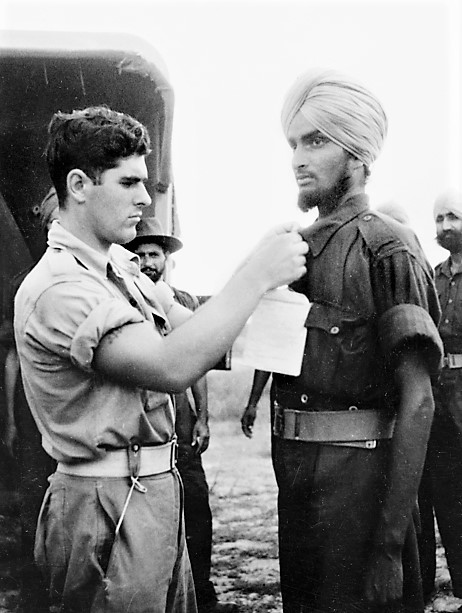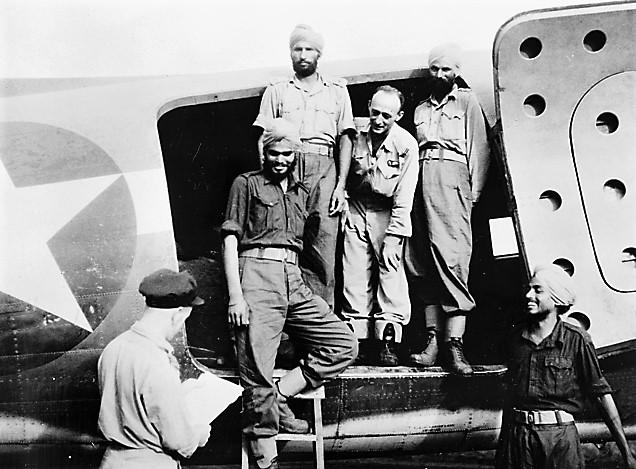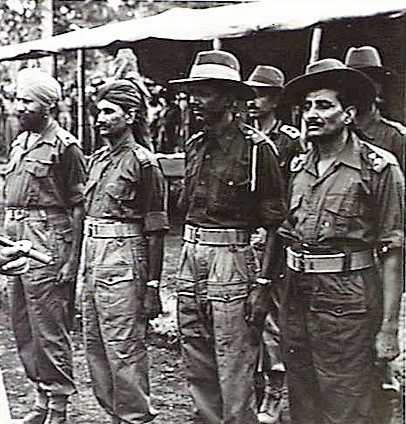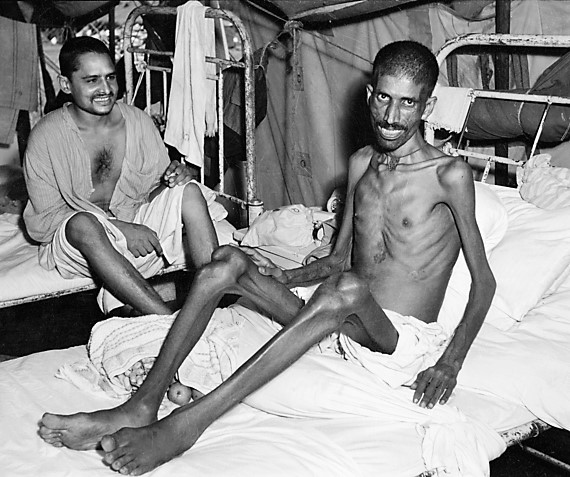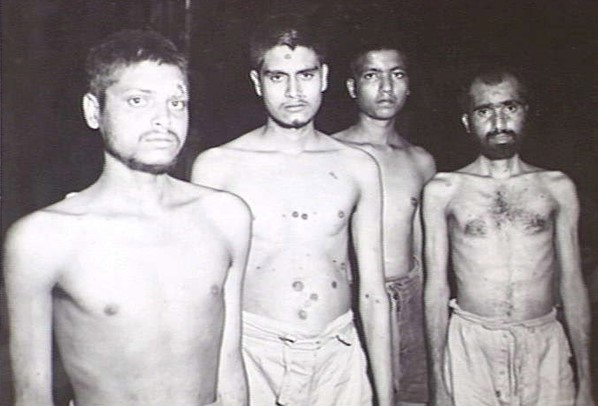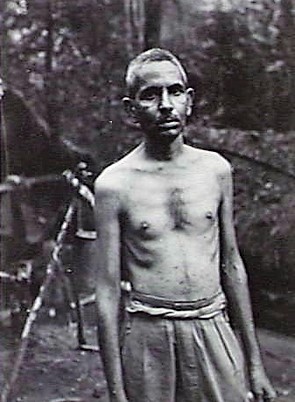1/9: Near Rabaul on New Britain Island, New Guinea, there were several camps for almost 6,000 Indian WW2 prisoners of war. The camps were often damp from tropical downpours, hot, humid and rife with malaria and skin diseases. note: Apologies for the poor quality of many photos.
1a/9: Most POW camps were placed in jungles outside town, as Rabaul was for four years the most consistently and heavily bombed town in the entire Pacific region. Many POWs, however, were killed by Allied bombing. In following tweets I’ll not reveal names, to save embarrassment.
2/9: A group of malnourished junior Officers of the 1st Hyderabad State Regiment. Note the walking sticks to aid movement. Many of the older men had not survived the rigors of captivity. All men were occupied in heavy work building Japanese tunnels, bunkers and gun emplacements.
3/9: A man of 5/11 Sikhs, dressed in donated Australian uniform, gets ready to board an ambulance; hospital tag is being pinned by a medic. The Indians were described Australian troops as "very weak but their morale still high” and were "fine men" but "in a desperate state.”
4/9: The previously mentioned group of 69 Sikh men were actually discovered on small adjacent Los Negros Island, near Manus. They walked into the US 1st Cavalry Division lines 8th March 1944. After two years slaving at the Imperial Japanese Navy base there, they were flown home.
5/9: On Bougainville 1945, only about 240 men from 20 units were still alive; Sikhs, Moslems & Hindus from all of India. One Gorkha, Subedar --, was "the sole survivor of a Gorkha unit which had been shot down in cold blood, his face bashed by rifle butt.” Nepali can DM for name.
6/9: This is Sepoy -------, with his friend he’s receiving medical care at an Australian Casualty Clearing Station. It was almost two months before many of the Indian POWs were fit enough to go home. They were eventually taken home to India in a British Aircraft Carrier.
7/9: These unidentified soldiers were victims of spirochetal disease, and diptheria. For almost four years the POWs had received no, or at best rudimentary, health care. They had had no access to antibiotics, penicillin, etc. All survivors were malnourished; skin diseases, etc
8/9: Jemadar Quartermaster --------- of the 1st Hyderabad Regiment. As quartermaster, he had to negotiate more rations and supplies for the men. Thus, the guards beat him with sticks on a regular basis. He kept a careful record of the names of the Japanese who ill-treated him.

 Read on Twitter
Read on Twitter